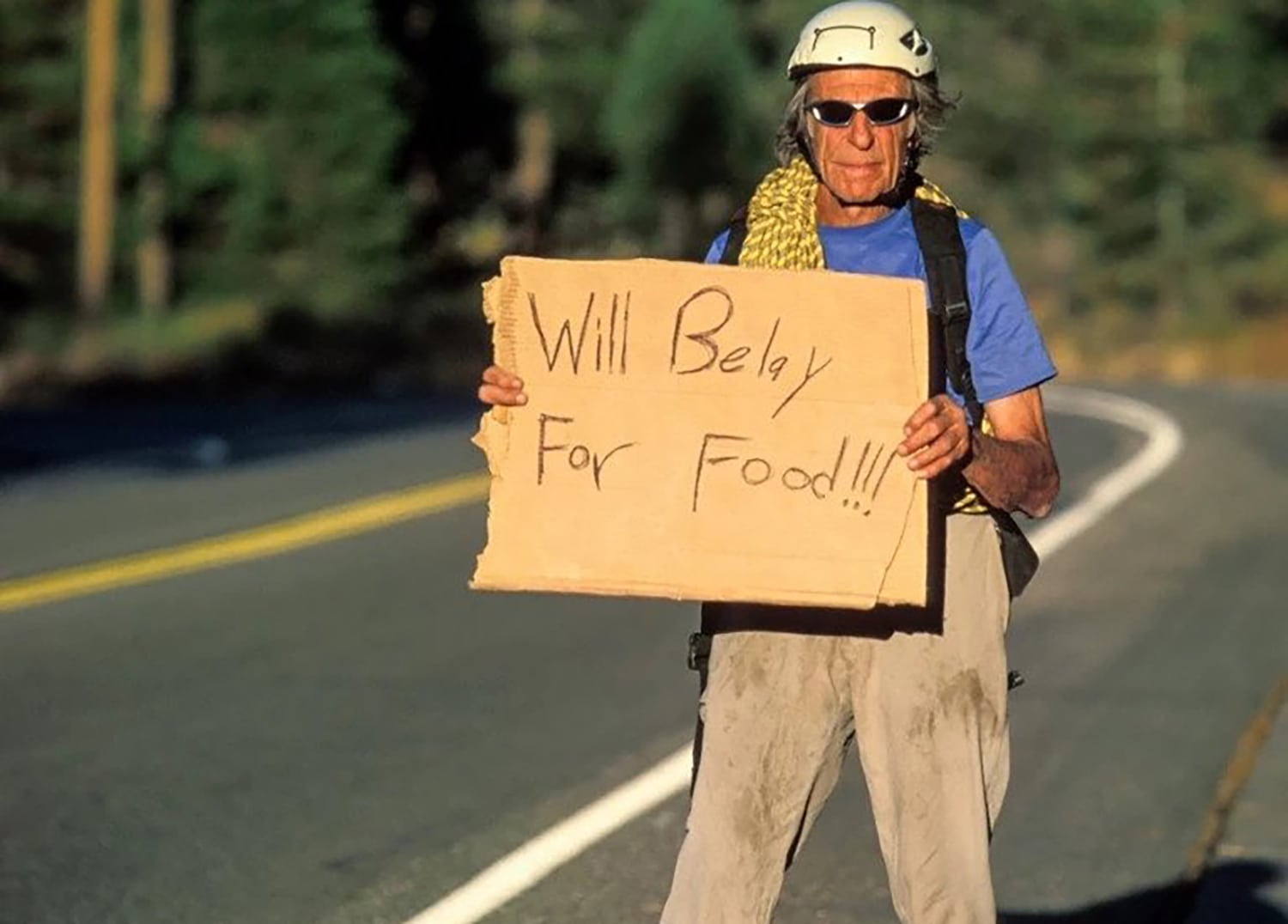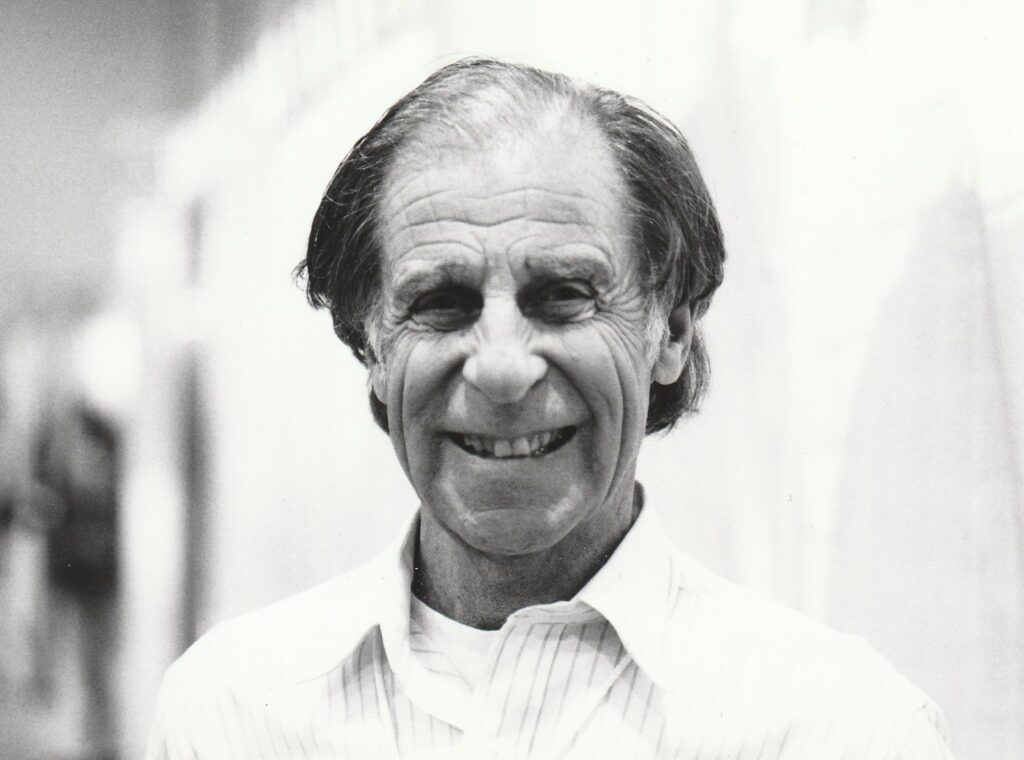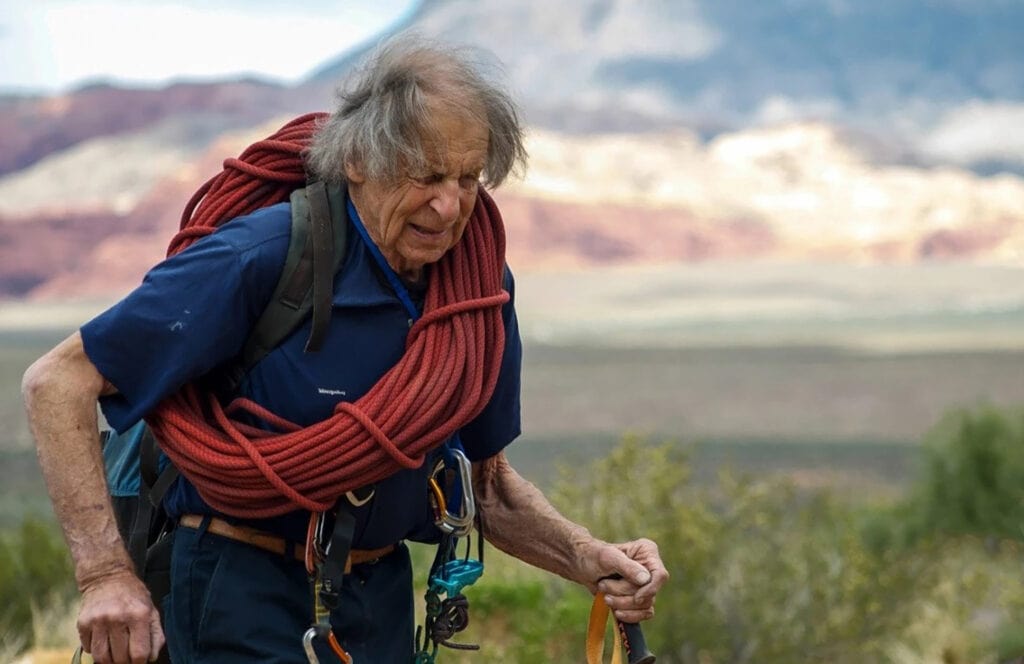Fred Beckey: The Incredible Life of the Dirtbag Legend

Published on: 11/02/2022
The climbing world attracts all kinds of characters. Some are drawn to the challenge, some to the adventure, and some to the sense of community. But most of us are weekend warriors. Our families, work, and other commitments return to center stage once we’ve had our fix.
And then you have the likes of Fred Beckey, a man who lived, breathed, and dreamed of climbing for more than seven decades. The term dirtbag is a kind of badge of honor used to describe a climber who eschews recognition, material wealth, and even a regular career in favor of climbing. Or, in other words, someone who always finds a way to put rock climbing first – often without any need or desire for recognition.
By this definition, Fred Beckey was a true dirtbag – and maybe even the original dirtbag. There were climbers with more name recognition, more brand deals, and certainly those with more money. But Fred Beckey was undoubtedly America’s (and arguably the world’s) greatest first ascensionist, scoring firsts on some of the continent’s tallest peaks. And his guidebooks have led tens of thousands of climbers through many of America’s most aesthetic mountain routes and classic climbs.
Early Life
Fred was born Wolfgang Gottfried Beckey in Düsseldorf, Germany in 1923. His father was a surgeon, and his mother worked as an opera singer. Economic hardships post-WWI forced the couple to leave the Weimar Republic for America in 1925. They would settle in Seattle. Fred’s brother Helmy (Helmut) would be born a year later in 1926. He would accompany Beckey on many of his early adventures in search of new routes.
Boy Scouts
Fred’s entanglement with climbing goes something like this: in 1936, the Beckey family was on a car camping vacation in the Cascade Mountains when Fred wandered off. He went for a rather vertical wander, climbing Boulder Peak in the process. When back in their Seattle home, Fred’s parents decided to enroll him in the local chapter of the boy scouts to better channel his energy. And it certainly seemed to work. Fred Beckey would dedicate just about all of his energy to climbing from that day until his final one.
Seattle Mountaineers
By 1939, he had joined the Seattle Mountaineers. This allowed him to learn rope and protection techniques while introducing him to other eager, young climbers. In that same summer of 1939, Fred, Clint Kelley, and Llyod Anderson made the first ascent of Mount Despair in the Cascades. This achievement lit a fire under Fred and his contemporaries, causing them to top out thirty-five of the region’s tallest peaks in that season.
Climbing Legacy – Cascade Conquerer

While still a teenager, Beckey and his peers went on a tear throughout the Olympic Mountains and the Cascades. Many of the peaks on their hitlist were so remote and undocumented that figuring out their approach was often an issue. Undaunted, Fred and company forged ahead, topping out fifty peaks in two years. Over half of these were first ascents. Sadly, there are precious few documents of these trips.
Guerrilla Climbing
But according to hiking legend and friend Harvey Manning:
“Most were done on a half-dozen semi-expeditions lasting a week or more, bent under monstrous packs, busting through valley brush to glaciers poorly shown on maps, if at all—trips that established Beckey as a leading explorer of the continent’s most alpine range south of the 49 parallel.”
Fred made a formative approach and climb with his brother Helmy in the summer of 1940. They ventured into the Northern Picket range, a small but extremely rugged subrange of the north Cascades – full of unclimbed peaks. Like a lot of their early adventures, they had little beta to work from and equally little idea of what to expect.
Of this expedition, Fred would later tell Chris Jones of Mountain magazine:
“That trip Helmy and I made into the Pickets in 1940 was one of roughest. We traversed the Pickets, just the two of us. I think we were very bold doing our first major climbs in such desolate country. We were taking chances on really bad rock, with broken ‘streetcars’ of ice hanging above us, and the glaciers were heavily crevassed. I gained a lot of confidence on that trip.”
Second Ascent of Mt Waddington
This confidence would allow Fred and Helmy (who were still teenagers at the time) to take on their most daunting challenge in 1942. Mount Waddington is a thirteen-thousand-foot peak in British Columbia known for its fierce and unpredictable weather. It had only been summited once in 1936 by William House and Fritz Weissner.
Scoring the second ascent of Waddington was a big deal for the Beckeys. And it confirmed that they could tough it out. A huge factor in their legacy (and especially Fred’s) was their willingness to trek and suffer. They could endure long marches under heavy packs, bad weather, spartan rations, and rough sleeping. This allowed them to explore further than any of their contemporaries, seeing (and climbing) some of the country’s best routes before anyone else. The North Cascades was their playground.
Alaska, Canada, and North America
In the mid-1940s, Beckey’s eye turned to peaks further afield (and Helmy retired from mountaineering). On his second journey to Alaska, Fred climbed Devil’s Thumb and Kate’s Needle – both first ascents. More notable ascents followed in Alaska, British Columbia, and the Pacific Northwest on peaks like Mount Hunter via the West Ridge, Mount Deborah, and Mount McKinley. Fred also opened and climbed new routes during this period, including the first ascent of Northwest Buttress on McKinley Mountain with Henry Meybohm in 1954.
American Alpine Club
His list of first ascents on the American Alpine Club website continues for thirteen pages. During this period, Beckey often climbed with other legends like Harvey Carter, Henry Meybohm, and Yvon Chouinard. The consensus is that no one can ever hope to match Beckey’s number of first ascents. Another testament to his dominance is that among the routes of 50 Classic Climbs of North America, seven were established by Beckey.
International Expedition
Beckey’s only foray into the international expedition racket did not go so smoothly. In 1955, he was invited to take part in an international effort to summit Lhotse, the fourth-highest peak in the Himalayas. The night before their summit attempt, Fred’s partner Bruno Sprig developed cerebral edema at twenty-three thousand feet. Beckey descended in a storm to find help but was later blamed by some for abandoning his partner (who was later rescued).
Snubbed by the Everest Expedition
Whatever misunderstandings and misgivings this situation created, they would follow Beckey. When the American team for the first ascent of Everest was selected in 1963, Fred Beckey made an obvious choice. He was an expert on both rock and ice, had alpine experience, and had been to the Himalayas. But he was passed over. There were no more large, international trips for Beckey. For the remainder of his days, he preferred to keep things simple – a small, dedicated crew, a shared goal, and hard climbing.

More First Ascents
Fred sought out North America’s last unclimbed peaks in Canada, Alaska, and the Pacific Northwest. His unusually diverse skillset for the era meant he could take on technical rock challenges and fully-fledged alpine, mountain adventures. This diversity also contributed to even more first ascents. Many climbers of the time (and to this day!) specialize. Not Fred Beckey.
Road Trips and Writing
The road trip also became a staple for Fred Beckey. His whole life centered on climbing, planning his next adventure, and figuring out how to keep that train running. A writing career helped with this. Fred wrote in clear, sparse prose – uniquely suited to writing about this world’s remote, jagged mountains. Beckey was compiling and writing guidebooks from as early as the late 1940s. His first, a guide to the local peaks, was rejected for publication by the Mountaineers of Seattle. It was later picked up by the American Alpine Club, who printed a few thousand copies.
In the 1980s and 1990s, Beckey was still strong enough to travel and climb. He ticked off spots across the country, scoring (probably) his final first ascent in Wind River Ridge, Wyoming, in 1997. He continued to travel into the 2000s, visiting the Rockies in Colorado, Squamish in British Columbia, and the towers of Utah – hoping to tick some last mountains off his list. But time had begun to catch up with Fred. He continued to rope up and climb with younger climbers, sharing his wisdom, humor, and story.
As late as 2000, deep into his seventies, Fred Beckey was still going on expeditions with his close friend, Cameron Burns. The pair traveled to Zion national park, where they attempted to climb Touchstone Wall and Prodigal Son. They went away empty-handed.
Guidebooks

Beckey continued to write throughout his career. His most notable effort was a three-volume guide to the Cascades from the Columbia River to the Fraser River called Cascade Alpine Guide. The three-volume set is still in print and is currently in its third edition. His contribution to the American Alpine Journal was also immense, creating over 20 feature articles and hundreds of commentary pieces. His volume The Mountains of North America and Mount McKinley: Icy Crown of North America is still popular today.
In 2003, the Oregon Historical Society Press printed Beckey’s history of the region Range of Glaciers. Fred’s legacy as an American mountaineer is further cemented by his written work. To quote Dougald MacDonald, editor of the American Alpine Journal:
“No climber in the 88-year history of the AAJ has written more reports or had more climbs cited in these pages than Fred Beckey.”
Documentary
In 2017, Patagonia produced a documentary about Fred called, Dirtbag: the Legend of Fred Beckey. The film recognizes Beckey as history’s most unique, prolific, and polarizing American mountaineer. In addition to celebrating his many climbing achievements, the movie also explores how Fred’s lifestyle and attitude have become iconic parts of contemporary climbing culture.
It also shows that behind Fred’s veneer of a foul-mouthed contrarian was a keen intellect. If there is melancholy in the film, it’s in seeing that Fred’s body could no longer keep up with his mind later in life. Always a cautious climber (hence the longevity), Beckey walked away empty-handed from many a later expedition. But his love of living on the road, sleeping outdoors, and doing whatever he wanted never dimmed.
Death and Legacy
Fred Beckey died of congestive heart failure on October 30th, 2017, in the Seattle home of his close friend and biographer, Megan Bond. It’s beyond our remit to say what Beckey’s legacy is. There are few mountaineers, athletes, or even human beings with so singular a vision for what the good life is – let alone the courage to pursue it.
Legendary alpinist Jim Donini puts it like this:
“In a climbing sense, he was definitely the American original. I can’t think of anyone that epitomizes the modern or postmodern American climbing scene as he has.”
American Original
The idea of Beckey as an American original is a fitting one. He is part Malboro man, part contrarian, and certainly an antihero. And these qualities were things Fred Beckey could have tried to cash in on. Many of his contemporaries started companies, made fortunes, and raised families. Fred Beckey just went climbing – for seventy-five years or so. And his enthusiasm for this one activity was enough to carry him through life.
As Megan Bond puts it:
“We were planning another trip to the Himalayas for next spring. He had a lot more to do,” says Bond. “He had a good death and a great life.”
Frequently Asked Questions (FAQs)

No. After a disastrous experience with an international attempt at climbing Lhotse, Beckey was put off international expeditions.
He worked as a guidebook writer. There are also unsubstantiated rumors that he found a crashed airplane full of cash and gold bullion on one of his early expeditions!
No. Fred Beckey died on October 30th, 2017, in Seattle.
Fittingly, he is buried in Mountain View Cemetery in Leavenworth, Seattle.

